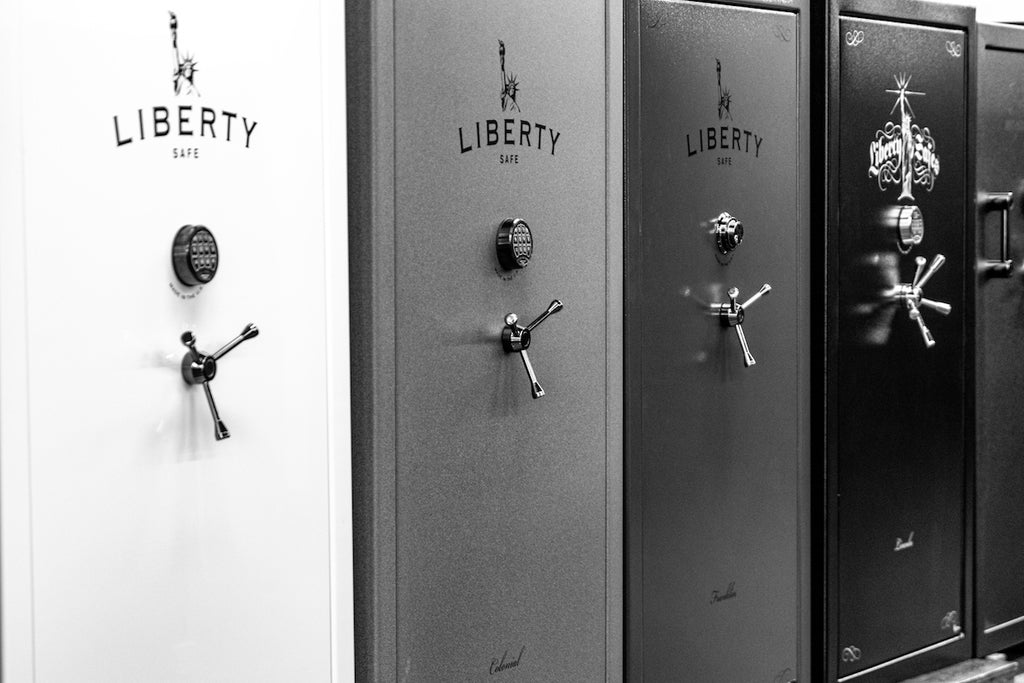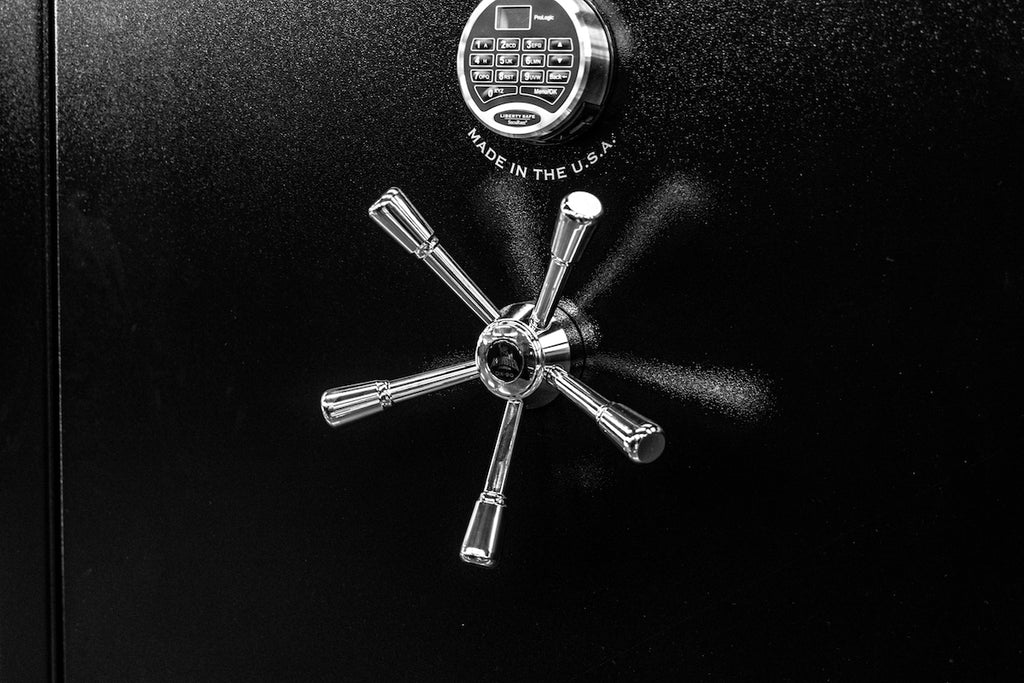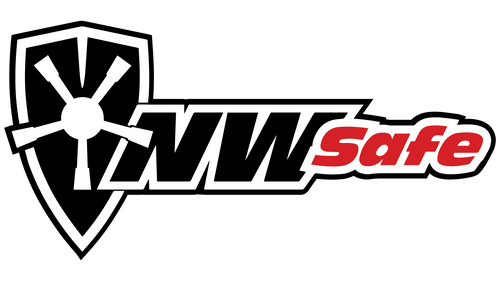Gun Safe Maintenance Protects Your Valuables
Like any piece of machinery, your gun safe requires regular maintenance to keep it functioning properly. This is true no matter which high-quality safe you purchased. Some maintenance requires a little TLC, like lubricating bolts.
Other maintenance items don’t necessarily require actual work on the safe. Rather, they are checks to make sure items like the locking mechanism, door bolts, and fire seal are all in good condition.
How Often Does Your Gun Safe Need a Maintenance Check
Depending on the safe, safe maintenance should be performed every one to four years. While some manufacturers recommend having a safe maintenance check-up yearly, we have found this is typically overkill.
The exception to this is commercial or government safes. These safes are not only typically accessed frequently (daily or multiple times a day), they are providing an essential service and should have maintenance checks performed yearly.
For example, at the four-year mark we can typically catch issues developing with the mechanism, relocker, and lock. Liberty safes have a five-year warranty, which means any issue detected can be resolved under warranty.
That being said, the interval we recommend checking the safe out within will be partially determined by the manufacturer’s lock warranty. If your warranty expires at four year, we would likely recommend a maintenance check at three years.
Additionally, the amount of use the safe gets can also increase the necessary frequency of a maintenance check. Safes that are opened multiple times a day can sustain a lot more wear and tear than those that are used every three days.

What is Gun Safe Maintenance?
This is a common question we get asked. What needs to be done? What should you expect?
Like with cars, the maintenance differs from model to model. Safe mechanisms need to be checked for loose bolts and broken welds. They also need to be lubricated to avoid wear and prevent binding, which can lead to failure.
Not all safes, but premium safes like Liberty safes, are equipped with a clip clutch. This feature keeps thieves from using brute force to break into your safe. It needs to be checked to ensure your valuables are protected.
A good safe technician will always check the door tension to ensure the fire seal will work properly. A properly adjusted door also increases the pry protection of your safe. Furthermore, they will look at the relocker to ensure screws aren’t loose and it can’t be knocked off easily.
Electronic locks need to have the mounting screws checked to make sure they don’t come loose. The overall function of any lock needs to be evaluated for performance.
In the case of dial locks (also known as a combination lock), the screws also need to be checked. The inside of the lock also needs to be checked for metal shavings and the wheel packs need to be checked to ensure they haven’t drifted.
During assembly, the lock mechanism is tuned. However, there is always turnover in production and there’s no guarantee someone experienced tunes the lock. An experienced technician can check that your lock is tuned correctly.
NOTE: Spinning Your Dial Lock Too Fast Can Damage It
Many safe owners think it’s really fun to spin their dial lock as fast as possible. This can actually damage the dial lock. There are a bunch of tiny teeth that mesh together within your lock. Turning it too fast and snapping it quickly one direction and the next can cause these teeth to round and/or wear off.
Over time, this can cause the combination to change and the lock to become harder to open. Ultimately, if misuse is prolonged, this can cause your dial lock to fail, requiring a safe technician to open your safe and reset your lock. In some cases, they may even need to replace your lock.

Can you Perform Your Own Safe Maintenance
Depending on the model, there are roughly 17 different items that need to be checked during routine safe maintenance. Of these 17 items, five of the items that need to be checked are elements of your gun safe lock mechanism.
Those who are mechanically inclined may feel they can tackle gun safe maintenance on their own. And in some cases, they are correct. There are some items which can be checked by someone who isn’t a skilled gun safe technician. However, it’s important to keep in mind that a professional gun safe technician has skills and expertise they’ve developed over years of maintaining and repairing safes.
Not all of the items that need to be reviewed to maintain your safe are simple. And some require specialty tools. The following are the items that I believe can safely be checked by the gun safe owner:
8 Gun Safe Maintenance Items You Can Check Yourself
1. Drifting Combinations on Dial Locks
If your safe has a dial lock, you want to check for a drifting combo. Simply dial your combination numbers all ¼ digit high and make sure the lock works. Then dial all the digits of the lock ¼ digit low and make sure it works. If it opens both times, your combination is centered and has not drifted.
2. Moving Dial Ring
If your dial ring moves, this can disrupt your ability to open your safe. Grab hold of the ring around your dial lock. (This ring is also known as your dial ring number spindle.) If you try and rotate it left or right, it should not move.
3. Replace the Battery on Your Electronic Lock with a Duracell Battery
Battery failure is the most common reason gun safes with electronic locks can’t be opened. This is why we recommend replacing the battery on your gun safe regularly. Typically, a 9-volt battery with an expiration date for 4-5 years from the time it is installed will last 2-4 years with normal use.
That being said, we recommend replacing your battery yearly. Battery failure, even on batteries within their expiration window, is very common. And, replacing a battery is a lot more cost-effective than paying a safe technician to come open your safe.
We always recommend using a Duracell brand battery, as we’ve found them to be the most trustworthy on the market. Click here to learn more about why.

4. Handle Hub Wiggling
There should be very minimal in and out movement and side-to-side wobble from the handle of your safe. If it’s loose, you may be able to locate the set screws or bolts securing the handle and tightening it down to minimize the play.
If your safe has handle spokes, you may be able to tighten the handle spokes. But, be sure to put on a pair of rubber or nitrile gloves for added grib to ensure a properly tightened handle.
NEVER use loctite on your handle hub. This can make it extremely difficult to remove the handle hub in the event you need to move your safe through a doorway or small opening.
5. Grease Perimeter Locking Bolts
Open your door and extend all the perimeter locking bolts around your door. For some models, this may require you to press a small button along the interior of the door while turning the handle.
With locking bolts extended, apply a very light and narrow layer of white lithium grease around the perimeter of each locking bolt. Operate the mechanism 10-15 times so that the bolts slide into and out of the door, lubing the door bushings and bolt hole guides.
6. Fire Seal
Open your safe and take a close look at the fire seal located around the door frame of the safe. Check for missing sections and cracks. Also, look to see that it is secured to the door frame.
7. Lube External Hinges with Tri-Flow
To keep the external hinges operating properly, make sure they are lubricated. You can use an oil, such as tri-flow.
DO NOT let any lubricant touch the locking unit. In some cases, internal hinges can be hard to access. If you can see them, simply give them a small shot of lubricant to help them keep functioning properly.
8. Dehumidifier
A dehumidifier is essential to maintaining the humidity level within your safe and protecting your valuables. We recommend running two kinds of dehumidifiers, a desiccant dehumidifier and a dehumidifier rod.
Why two dehumidifiers? Because one circulates air, creating positive pressure inside the same. The other absorbs excess moisture. Additionally, in the event one dehumidifier fails, you have a backup.
If you have a rechargeable desiccant dehumidifier, you’ll want to recharge this every 2-3 months.
To check that your dehumidifier rod is working properly, touch it. You want it to be warm. If it is cold, check to see that the power source is working. If it is and the rod is still cold, the rod likely needs to be replaced. But, instances of rod failure is not very common. In most cases the rod has not been properly installed.
Top Dehumidifiers
- Dry Rod Safe Dehumidifier
- PEET Air-Circulating Dehumidifier
- E-365AD Air Dry System
- Desiccant Moisture Absorber
Top Gun Safe Maintenance Items You Should Hire a Safe Technician For: Safe Relockers and Slip Clutch Mechanisms
YouTube University may make it seem like servicing your own safe relocker or slip clutch mechanism is no big deal. Unfortunately, it’s fairly common for individuals with minimal experience servicing safes to improperly fire the relocker or adjust the slip clutch mechanism.
The result is locking yourself out of your safe. This can be very costly, as regaining access almost always requires the unit to be drilled by a safe technician.

